![]()
![]()
![]()
Use LEFT and RIGHT arrow keys to navigate between flashcards;
Use UP and DOWN arrow keys to flip the card;
H to show hint;
A reads text to speech;
9 Cards in this Set
- Front
- Back
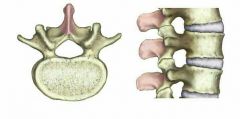
Name of the red area? Function?
|
Spinous process, where the laminae fuse together
|
|
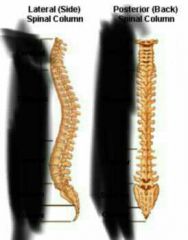
Name the four Spinal curves, top to bottom. Primary curves? Secondary?
Function of each? |
Cervical: Support the head, allows the head to move-Thoratic: Hold the ribs-Lumbar: Bear the weight of the body-Sacral: Articulate with the pelvic girdle
Primary Curves: Thoratic and sacral (appear in the fetal development) Secondary Curves: Lumbar and cervical (appears months after birth) |
|
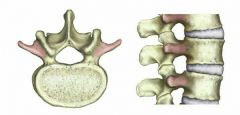
Red Area? Function?
|
Transverse process
Function: Attachment site for muscle |
|

Name all parts, function of part C1? Part C2?
|
C1=Atlas-Holds up the head, allows for your head to shake 'yes'
C2=Axis, arrow is the dens, allows for the rotation of the head to say 'no' |
|
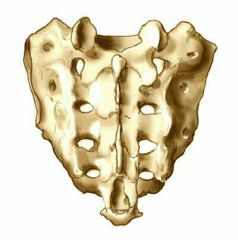
Name? Function?
|
Sacrum: Attaches the axial skeleton to the apindicular skeleton
|
|
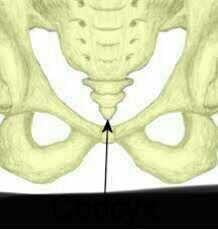
Name? Function?
|
Coccyx-Provides an attachment site for a muscle that closes the anal opening
|
|
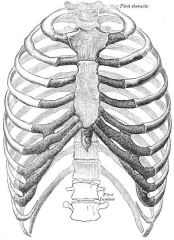
Name? Different tips of ribs? Costal Carrilage function?
|
Thoratic Cage: True ribs:1-7. False ribs: 8-12. Floating ribs: 10-12. Costal Cartilage connects the true ribs to the sternum
|
|
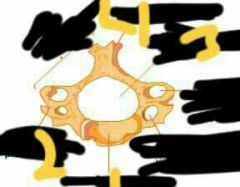
Name of the vertebrae? 1-4 and function
|
Cervical Vertebrae
1: Body 2: Transverse Process: Attachment sites for muscle 3: Vertebral Foramen: Hole for the spine 4: Spinous Process |
|
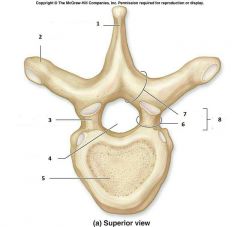
Name? 1-2-white spot on 2-4-5
|
Thoratic vertebrae
1: Spinous process 2: Transverse process (costal facet- connects to the ribs) 4: Vertebral Foramen 5: Body |

